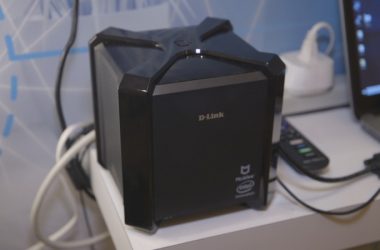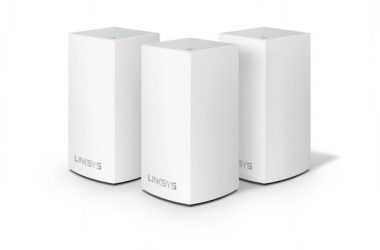
Facebook’s data centers already need 100-Gigabit Ethernet and ideally could use 1-Terabit Ethernet, according to a senior network engineer at the company.
The popular social-networking service’s growing bandwidth needs reflect the explosion in overall network traffic that enterprises and technology companies are trying to address, according to speakers at the Ethernet Alliance’s Technology Exploration Forum, held Tuesday in Santa Clara.
Facebook builds its own data centers out of many identical low-cost servers, linked via standard Ethernet, and pools their processing power to run its core applications. The network fabric that links those systems is a critical piece of the infrastructure, Facebook Engineer Donn Lee told the Ethernet gathering.
"Already, there is a need for 100-Gigabit Ethernet, and where we’re going for our upgrades, there is already a need for 1 terabit," Lee said. Facebook has so many servers, and those servers can process data so fast, that they could fill 64 Terabit Ethernet pipes in the backbone of one data center, Lee said.
Ethernet is moving toward 100 Gbps (bits per second), with the option of 40G bps, but those long-awaited specifications aren’t expected to be complete until later this year.
Though carrier backbone networks get a lot of attention, the escalating speeds of Ethernet may be needed first in data centers. The servers in Facebook’s centers use a huge amount of network capacity as they collectively solve problems such as backing up databases, according to Lee.
"Just one of our tasks could eclipse the bandwidth of all of our users combined on any given day," Lee said.
Facebook is different from many enterprises in that it throws many servers at a single application rather than dividing up each server into multiple virtual machines. That means it faces a special challenge of knitting the many servers together. But its bandwidth challenge is rooted in fundamental advances in technology. All server motherboards come with Gigabit Ethernet built in, and today’s multicore processors can easily fill those pipes, Lee said. Meanwhile, 10-Gigabit Ethernet is the fattest standard pipe Facebook can use to tie the whole data center together, and the company can’t find switches that pack in enough 10-Gigabit ports to run the network at optimal speed, he said.
Ultimately, network bottlenecks slow innovation at Facebook, Lee said. Faster network connections would mean faster development, as new internal or customer-facing applications were quickly run through their paces and refined. Ideally, each server could send a full 1G bps to any other server in the data center, but that would require the 64 Terabit Ethernet pipes Facebook can’t buy today — or 6,400 of today’s 10-Gigabit Ethernet connections, which isn’t really feasible, he said. A fabric of that size would require 160 of the largest switches available, Lee said.
"Just imagine trying to manage these," Lee said. "There are a lot of things that are missing from this data center fabric. All of these things are essential to running an Ethernet fabric, yet none of them exist at this scale." Lee said his job is to piece together the elements that are available.
Facebook’s data centers already need 100-Gigabit Ethernet and ideally could use 1-Terabit Ethernet





